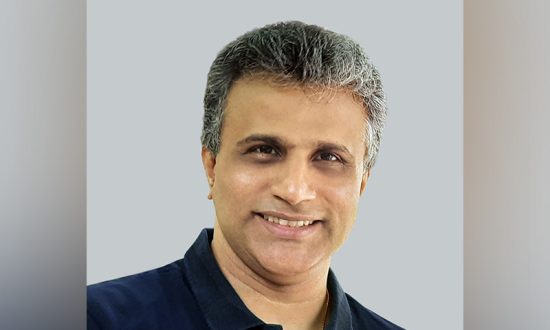Santhosh has had a distinguished career in Banking and ITes Industry for over 26 years, before he decided to don the hat of an entrepreneur. Over the past decade of his professional life, he has led several leading names to digital-first Innovations in the industry. Having demonstrated efficiency and robustness during a seamless transition to remote work during the disruptive pandemic during 2020, he co-founded – Mikro Grafeio, an integrated workspace, workforce & essential solutions provider. Mikro Grafeio intends to extend its presence in over 500+ locations across India, primarily in Tier 2, 3, 4 towns and rural centres.
India is a growing and competing economy with a large educated and skilled workforce spread across the cities/ geographies. The dichotomy the country faces is creating jobs for them in their respective locations, which now is largely concentrated in metros often leading to job insecurity and migration to metros.
As a country besides creating jobs for its people, it also needs to ensure the economic growth is evenly distributed, to at-least meet the needs of local economy to help them thrive. The millennials are also actively making a choice to leave metros for a healthier lifestyle and work-life balance to Tier 2 & 3 cities and towns. This ensures growth of these locales, in terms of becoming specialized hubs owing to the growing technical advancement in these cities.
Higher operational costs, rental and commercial costs for entrepreneurs and startups, along with higher salary for lesser experiences have off late acted as a deterrent for newer businesses and entrepreneurs who are looking at Tier 2 &3 cities and towns to set up their business operations and scale throughout the country.
In the recent years, Tier 2 cities like Coimbatore, Thirunelveli, Mysuru, Jaipur, Chandigarh, Cochin, Kozhikode, Indore, Patna and others have shown an economic growth rate of over 40%, making them an attractive option for newer businesses and even large firms to set up businesses there. The Government authorities in these states have been supportive and forthcoming to organisations, infrastructure is well developed, fresh and skilled talent is readily available with affordable salary packages, and well-rounded amenities have made them attractive destinations for several innovative business ideas to set up base in.
While on the other hand, the millennials themselves are caught in a juxtaposition where they feel their talent was either not appropriately appreciated in big cities or they did not get a right opportunity they deserved, while on the other hand especially post pandemic they feel staying closer to family is a good option.
Businesses have this to their advantage where they can tap this potential to the best of their use. With integrated workspace culture on the rise in these cities, start-ups or even large firms need not have to worry about managing office infrastructure and operations, skilling or hiring employees, as these are done efficiently by these organisations.
These Tier 2 &3 cities and towns are becoming leading concentration hubs for industries like EV, health tech, Edu tech, Information Security and cloud computing, textile and handicrafts, IT and allied services, telecom and related services and so on. To attract and retain young talent, what we need is an open and global work culture which people can relate to, fun and wellness activities flexible design and easy accessibility to work. Such spaces also help people grow professionally as it allows them to keep abreast with latest industry trends in their field and at the same time help them interact with people from their same and other professions which enables them to grow equally.
Therefore, to become a holistic workplace, an integrated workspace model needs to incorporate all functional parameters of a global workplace in order to create a professional environment employees can relate to whether they are in Metro’s or Tier 2 cities. Indian workplaces are striving to achieve the same.


